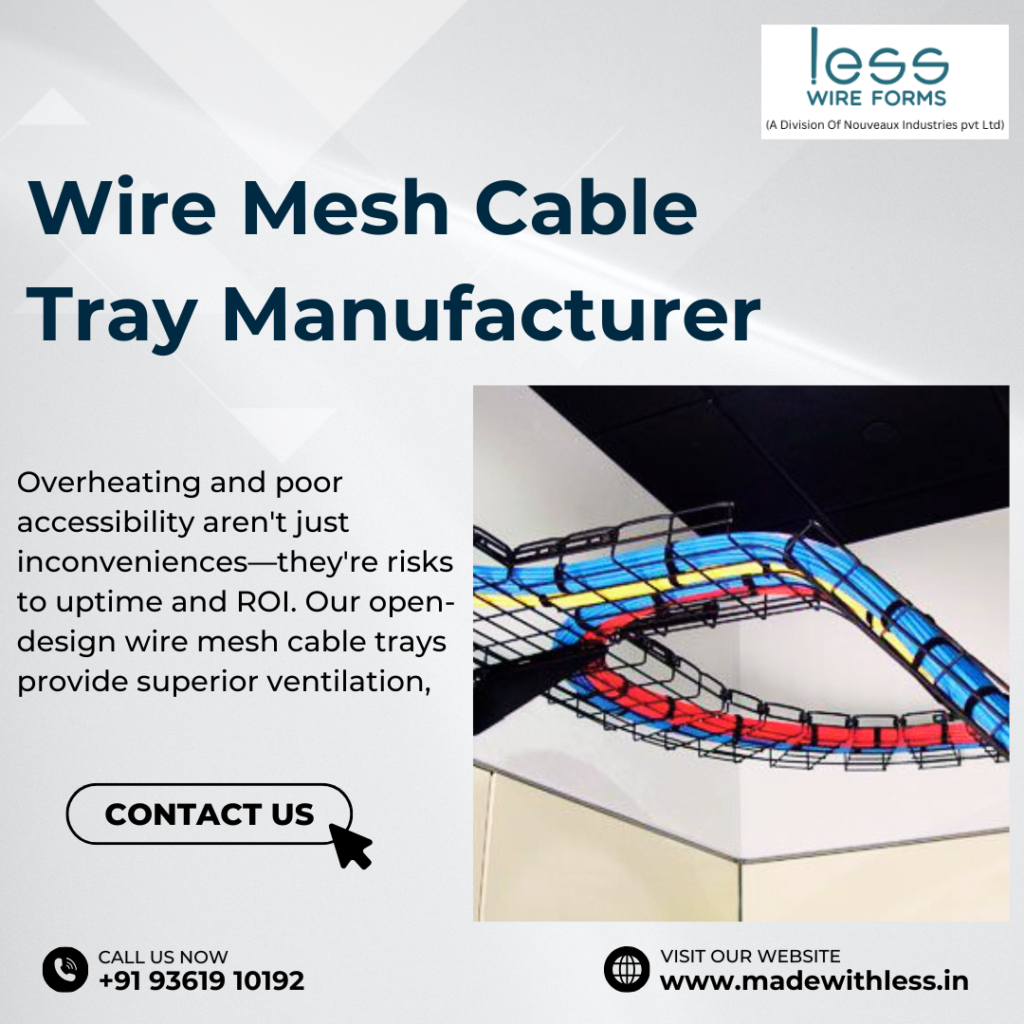In the digital age, the lifeline of any modern operation—be it a bustling data center, a sprawling telecom network, or a robust industrial facility—is its cabling infrastructure. Keeping thousands of feet of data, fiber optic, and power cables organized, accessible, and protected is a critical challenge. Enter wire mesh cable trays: the versatile, robust, and intelligent solution that has become the industry standard for efficient cable management.
This guide explores why wire mesh cable trays are the superior choice for these demanding applications and how they can benefit your next project.

What is a Wire Mesh Cable Tray?
A wire mesh cable tray is a modular support system, constructed from carbon or stainless steel wires welded into a strong, basket-like structure. Unlike solid-bottom trays, their open design offers a unique set of advantages for routing cables overhead, under floors, or along walls. The system typically includes straight lengths, bends, tees, reducers, and mounting hardware for complete design flexibility.
Key Advantages of Wire Mesh Cable Trays
Why have these systems become the go-to solution across industries? The benefits are clear:
- Superior Ventilation & Heat Dissipation: The open-mesh design allows for maximum airflow around cables. This is crucial in IT server rooms and data centers where overheating can throttle performance and damage sensitive electronics. Proper cooling extends cable life and ensures optimal functionality.
- Unmatched Accessibility & Flexibility: Adding, removing, or re-routing cables is incredibly simple. Technicians can easily feed cables into the tray from any point, drastically reducing installation and modification time. This is invaluable in dynamic environments like telecom central offices where networks are constantly expanded or upgraded.
- Exceptional Strength & Durability: Despite their lightweight design, welded mesh trays offer a high strength-to-weight ratio. They are built to support significant loads and withstand the vibration and harsh conditions found in industrial settings. Options like galvanized or stainless steel provide excellent corrosion resistance.
- Cost-Effectiveness: The lightweight nature reduces shipping costs and makes installation faster and easier, significantly lowering overall project labor costs. Their adaptability also future-proofs your investment, eliminating the need for entirely new systems during expansion.
- Clean & Professional Appearance: The organized, visible cable routing creates a neat and professional look, which is essential for modern IT and telecom facilities where aesthetics and clarity are important for maintenance and operations.
Applications Across Key Industries
1. IT & Data Centers
Data centers are the heart of the cloud, housing endless racks of servers connected by miles of cable.
- Use Case: Overhead routing of massive quantities of Cat6/6a, fiber optic, and power cables between server racks and to cooling units.
- Why it Works: Excellent heat dissipation protects sensitive equipment, and the open access allows IT teams to quickly troubleshoot and adapt to rapid technological changes without major downtime.
2. Telecommunications
From 5G infrastructure to central switching offices, telecom networks require highly flexible and scalable cable management.
- Use Case: Organizing backbone cabling, fiber optic runs, and coaxial cables in equipment rooms and along pathways to cell towers.
- Why it Works: The modular system can be easily expanded or reconfigured as network capacity grows, supporting the rapid rollout and upgrade of critical communication networks.
3. Industrial Facilities
Factories, manufacturing plants, and warehouses present some of the harshest environments for cable management.
- Use Case: Supporting control cables, motor leads, instrumentation cables, and power lines for machinery, conveyor systems, and automation equipment.
- Why it Works: Available in galvanized or stainless steel, wire mesh trays resist corrosion, moisture, and chemicals. Their open design prevents the accumulation of dust and debris, and their strength withstands constant vibration from heavy machinery.
4. Commercial Buildings
Office complexes, hospitals, and universities also benefit from this versatile solution.
- Use Case: Distributing data and power cables for workstations, WiFi access points, security systems, and building automation.
- Why it Works: The trays can be easily installed in ceiling plenums (often with fire-retardant coatings) and provide a safe, organized alternative to tangled cables.
Choosing the Right System
When selecting a wire mesh cable tray, consider:
- Load Capacity: Ensure the tray and its supports can handle the total weight of your cables.
- Material: Galvanized Steel is standard for most indoor applications. Stainless Steel is essential for corrosive environments like food processing plants or outdoor use.
- Finish: Consider powder coating for specific color coding (e.g., red for fire alarm, blue for data) or added corrosion resistance.
- Size and Width: Trays come in various widths and depths to accommodate different cable volumes. Always plan for future expansion.
Conclusion: The Smart Infrastructure Choice
Wire mesh cable tray systems are more than just a place to run cables; they are a strategic investment in a scalable, efficient, and reliable infrastructure. They provide the flexibility needed to adapt to technological change, the durability to ensure long-term operation, and the performance to keep critical systems running cool and efficient.
Whether you’re designing a new data center, upgrading a telecom network, or automating a factory floor, choosing a wire mesh cable tray solution is a decision that supports growth, innovation, and operational excellence.
Ready to design your cable management system? Contact our experts today to find the perfect wire mesh solution for your specific application.
